|
||||
|
||||
|
|
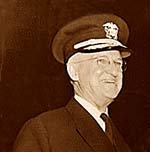 Chief of USA Naval Operations: Adm. Harrold R. Stark |
%20Smith,%20USCG%20-%20Ret.1889-1961.jpg) Commander USA Greenland Patrol: Edward H. "Iceberg" Smith |
|
||||
|
||||
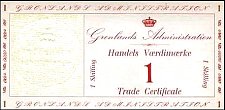 P.M5, S.77 1 Skilling ND(1941) |
||||
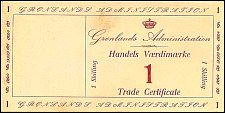 P.M5, S.77 1 Skilling ND((1941) |
||||
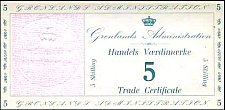 P.M6, S.78 5 Skilling ND(1941) |
||||
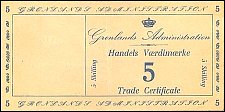 P.M6, S.78 5 Skilling ND(1941 |
||||
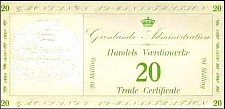 P.M7, S.79 20 Skilling ND(1941) |
||||
|
|
||||
When Denmark fell to the Germans during WWII, the USA signed a defense pact with Greenland. A key element of the defense was the Greenland Patrol, carried out by Commander Edward H. "Iceberg" Smith.From the US Coast Guard website, the following article by Dr. Robert M. Browning, Jr. indicates that Greenland was the site of the first military action in WWII. COAST GUARD MAKES THE FIRST CAPTURE OF
WWII
by Dr. Robert M. Browning Jr. In April 1941, the Coast Guard had been tasked informally with patrolling the waters around Greenland. At this time, the Battle of the Atlantic had raged for over eighteen months. Convoys steaming to and from the British Isles carried vital wartime materials. Merchant shipping had suffered tremendous losses from German submarines that prowled the western approaches to the European Continent. The United States sought to prevent war from spilling into its waters and to protect neutral shipping. Greenland became a pivotal territory principally because the Germans sent teams of men there and began using this vast island to send weather reports that aided their submarine's attacks on merchant shipping, and sent advance weather information to their surface vessels and air force. President Franklin Roosevelt directed Admiral Harold Stark, Chief of Naval Operations, to maintain a patrol off Greenland's east coast which the admiral tasked the Coast Guard to perform. The sinking of the German battleship Bismarck in May, hastened the official formation of the Greenland Patrol on 1 June 1941. Just over a week later the United States signed an agreement with the Danish Government to defend Greenland against invasion. The island was essential to the defense of the Western Hemisphere, and Denmark granted the United States the right to build and operate defense installations. To maintain this defensive responsibility the Coast Guard, with long years of Arctic service, provided the initial vessels for the patrol. The cutters Northland, Bear, and North Star were assigned to keep the northeastern portion of Greenland under surveillance. Commander Edward H. "Iceberg" Smith commanded the newly formed Northeast Greenland Patrol. Smith received orders to do much with little. He was to convoy U.S. Army transports, ore carrying vessels and supply ships, break ice for them if necessary, continue hydrographic surveying, maintain communications between the U.S. and Greenland government posts, rescue survivors of submarine attacks, maintain air and surface patrols, construct and maintain aids to navigation, bring supplies to small Danish settlements and Eskimos, and discover and destroy enemy weather and radio stations in Greenland. During the summer of 1941, the vessels of the Greenland Patrol faithfully performed the many missions assigned. The United States meanwhile inched closer to war in Europe. In July, the Danish defense agreement having worked so well, the United States signed a similar defensive agreement with Iceland to prevent its seizure by German forces. Shortly afterwards, the island was occupied by American troops. On 11 September, after the destroyer Greer was attacked while on patrol off Iceland, President Roosevelt issued his "shoot on sight" order to U.S. Naval forces. The same day, by Executive Order, portions of the Coast Guard began operating as part of the Navy. The day following the Presidential "shoot on sight" warning, Commander Smith, in the cutter North Star, acting on a tip from a dog-team patrol, sent the Northland to investigate a fishing vessel which had reportedly landed a party in a fjord. The Northland, a 2,065 ton cruising cutter, had been fitted with depth charges and a reconnaissance seaplane for arctic duty. The skipper of the Northland, Commander Carl C. von Paulsen followed the vessel into McKenzie Bay and sent a boarding team over for inspection. The Coast Guardsmen found twenty-seven persons on the Norwegian sealer identified as the Buskoe. At this stage of the war, Norwegians were considered suspicious and were routinely stopped and questioned by the Coast Guard since Germany had invaded Norway in April. The Danish hunters and Norwegian trappers on board all claimed to be on a fishing and hunting expedition. The boarding party brought the master of the Norwegian fishing trawler Buskoe back to the Northland for questioning. Returning to the Buskoe the Coast Guard boarding team found that the vessel was equipped with a radio transmitter and receiver, but also had a portable receiver and transmitter--proof that the ship was servicing German radio stations. More intense questioning revealed that some men with radio equipment had been dropped off earlier several hundred miles from their present position. After placing a prize crew on board the Buskoe, Commander von Paulsen got the Northland underway and went in search of the radio base. After steaming for twenty-four hours the Northland anchored in a fjord about five miles from the suspected location of the radio site. A landing party took a small boat to within a mile of the station and then traversed over the icy terrain in total darkness. Finding a shack, the Coast Guardsmen surrounded it and then Lieutenant Leroy McCluskey kicked in the door. Rushing in, the Coast Guard arctic commandos captured three Norwegians, one under German orders, their radio gear, confidential instructions and codes. The men were taken into custody as illegal immigrants since the United States had not declared war on Germany. The first military capture of World War II has largely been forgotten over the years. But the fact remains, United States Coast Guard forces, in a foreign land, captured a party of men operating with the Germans three months before war was declared. This was an extremely bold action and a sample of the role that the Coast Guard would play in this nation's largest war. |
![]()